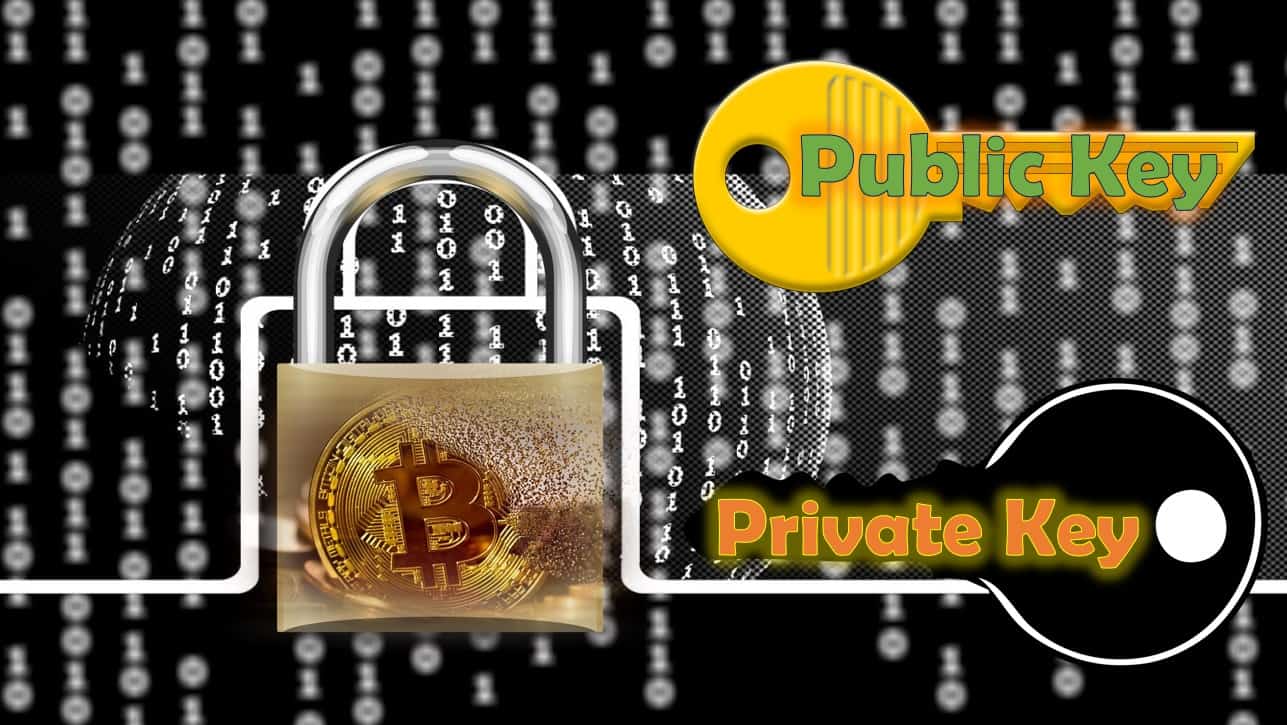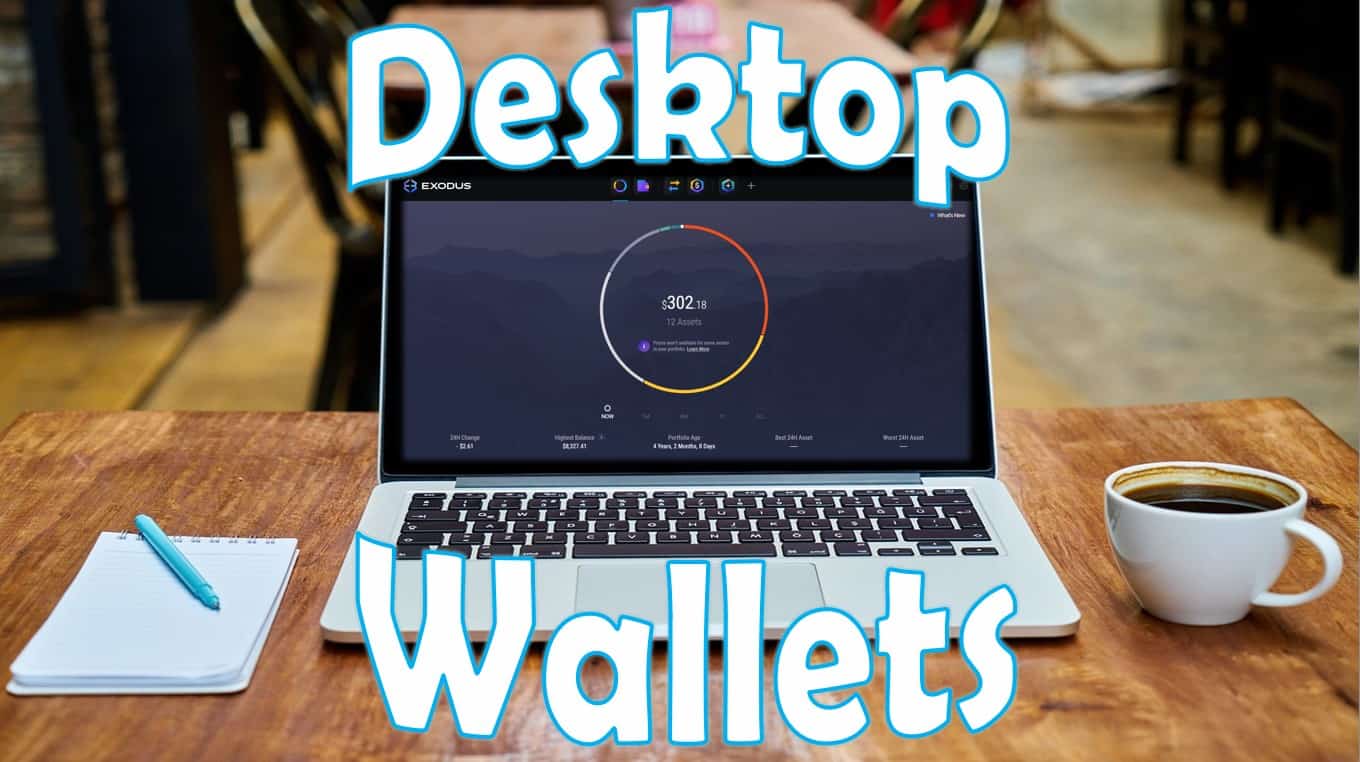
Unlock Your Crypto Wallet: Public and Private Keys Explained
Last updated on June 8th, 2023 at 02:45 pm
Have you ever been locked out of your own house?
If you have, then you know that it’s completely frustrating, requires radical action to find a key so you can get in, and until you do, you’re literally left out in the cold.
Well, when it comes to cryptocurrency wallets, the same thing can happen. That’s why you always need access to your keys, but it’s definitely a different kind of key then we were just talking about.
So, what are the Public & Private Keys in your cryptocurrency wallet?
Public Keys are a long string of numbers and letters, a unique cryptographic address, which can be shared with anyone to receive funds. Private Keys are an encrypted string of numbers and letters that must remain secure. It can be used to spend and access funds, sign for transactions and provide proof that a transaction originated from you. Public & Private Keys are essential components to a cryptocurrency wallet.
The use of Public & Private Keys in your cryptocurrency wallet is fundamentally what makes your digital wallet function and gives you access to your crypto assets.
For some people, especially newcomers to the crypto space, the juxtaposition between Public & Private Keys can be confusing, and to be honest, almost impossible to understand.
Ultimately, it’s all about providing users with a secure way to store and manage their crypto assets.
Let’s explore the differences between these two important components in greater detail.
TABLE OF CONTENTS
What Is Cryptography?
Before we get started on Public & Private Keys, we should discuss cryptography.
I realize that most people reading this post are not cryptographers, and they don’t play one on TV!
Heck, most people probably have nothing more than a basic understanding of cryptography… AT BEST!
Let me be clear, I am not a cryptographer, but I have researched this topic, especially as it relates to crypto… and I’m trying to relate this information in a simple and relatable manner.
Cryptography is a fascinating field of mathematics and computer science that has been around for centuries. The word finds its origins from the Greek words kryptos (meaning hidden) and graphein (meaning writing).
Cryptography involves the use of complex algorithms to encrypt and decrypt data, making it impossible to understand without the right keys or knowledge.
While cryptography itself has been around for centuries, the modern version of cryptography dates back to WWII when Allied Forces sought ways to protect their transmissions from enemy interception. This ushered in the era of modern cryptography, which has been essential for secure communication ever since.
Fast forward, and we’re now living in an age of digital communications, where encryption technology is more important than ever. From online banking to email messaging, cryptography is the foundation for protecting our sensitive data from malicious actors.
Cryptography is a powerful tool for protecting sensitive data and ensuring secure communication in our increasingly digital world.
So, if you’re looking to keep your cryptocurrency safe and in your control, this is the cryptographic system that will help you do just that.
Public Key Cryptography (PKC)
Public Key Cryptography (PKC) is a revolutionary technology that has changed the way we communicate online.
With PKC, two people can exchange data securely without having to share their private key with each other.
So, how does it work you ask?
Let’s try to sum it up…
This type of cryptography utilizes two cryptographic keys, a public and a private key. These keys are mathematically linked together so that any message encrypted with one key can only be decrypted with the other.
Once data is created via PKC, Asymmetric Encryption is often used to verify the validity of the data.
This process works by encrypting a message with one key and then decrypting it with another, proving that the message was sent by the rightful owner.
It’s an ingenious system that ensures only those parties with access to both keys can view or alter the data.
Think of it like having a personal safe that only you and the key holder can open, ensuring your messages stay secure from any potential intruders.
PKC has been a game-changer for online security, providing a secure and reliable way to exchange sensitive information quickly and easily.
If you understand how each of these cryptographic keys operate, you can start to understand why cryptocurrency utilizes this type of encryption.
Crypto Wallets Use a 2 Key System
To help you understand the importance of this system as it relates to cryptocurrency, and your crypto wallet in particular, let’s try to draw you a virtual picture.
A cryptocurrency wallet is like a virtual safe. In order to access what’s inside, you need the right key or combination.
Your Public & Private Keys are the correct combination of keys necessary to unlock that safe.
The Public Key allows anyone to put money into the safe, and see who else put money into the safe.
The Private Key allows the owner of the safe to verify proprietorship of the money in the safe. They can also verify transactions using the Private Key, as well as send the money anywhere by providing an immutable signature for each transaction.
So, to recap, by utilizing PKC, and generating the correct Public & Private Key combination, you can protect your wallet from any potential intruders.
This means that if someone were to try and steal your coins, they would be unable to do so without both of the keys.
So, let’s look a bit closer at the role of each of these keys.
Public Key
To help you better understand what a Public Key is, and how it is utilized in relation to your cryptocurrency wallet, let’s consider another analogy.
A Public Key is a unique identifier that enables you to securely receive payments.
Your Public Key is like your virtual bank account number. Think of it as the address of your crypto wallet.
When someone sends money to your Public Key, they’re sending it directly to you.
Anyone can see this number and use it to send money directly into your wallet… and for public blockchains, anyone can see what assets are associated with this address.
Because of this forward facing address, some people are concerned about the safety of their crypto wallet.
They worry if their cryptocurrency wallet can be hacked. Because of this fear, I’ve dedicated an entire article to this topic, check it out here.
However, as important as the Public Key is, with a Private Key, you can generate multiple Public Keys.
Private Key
Let’s start out by highlighting the key takeaway from this section… your Private Key, is the most important key to you!
As such, it is important to keep it secure at all costs and never lose access to it… because if you do, you WILL LOSE access to your crypto assets!
Now that we have that out of the way…
A Private Key is like a secret code that enables you to access your wallet.
It’s the key that opens the virtual safe of your crypto wallet, allowing you to send and receive funds from it.
Without it, no one can access your funds or verify any transactions made.
To help you understand more about cryptocurrency and Private Keys you should read this article.
But, where exactly are Private Keys located in your crypto wallet?
Where Private Keys are Located
To help you further your understanding of Private Keys, it’s important to understand where they are stored.
Private Keys are stored in your cryptocurrency wallet, and depending on the type of wallet you have, they can be found in a variety of places.
For example, if you’re using a desktop wallet, your Private Key will likely be located within the file folder where you installed it.
If you’re using an online wallet, it could be stored in a secure server on the cloud.
Finally if you’re using a hardware wallet, the Private Key is stored within the device itself.
In any case, your Private Key should remain safely hidden away from prying eyes.
Now, as you can probably tell from the explanation of where Private Keys are held depending on the wallet being used, it should be obvious that there are varying levels of security depending on the type of wallet you’re using.
If you don’t already understand the different types of cryptocurrency wallets, you need to start reading here.
Are you asking yourself what the safest cryptocurrency wallet is?
The answer is a hardware wallet, I use and recommend Ledger.
For most wallets, your Private Keys are hidden and protected by a series of words known as a seed phrase.
Seed Phrase
A seed phrase for a cryptocurrency wallet is like a secret code that helps protect and secure your Private Key.
This phrase is usually 12 or 24 words, which are cryptographically chosen to relate only to your wallet.
Think of it as the key to the vault. You need it to get in, but no one else can access it without it.
It’s essentially an extra layer of protection that ensures only you have access to your crypto assets.
It’s important to take the time to store your seed phrase in a secure location, as it is the only way you can recover access to your funds.
When it comes to securing your seed phrase, it is a good idea to not store it anywhere that is accessible to the internet to prevent hacking.
Furthermore, you should consider holding this seed phrase and frankly any physical hardware device itself, in multiple, secure locations.
You should consider different geographical locations as well as being secured in a Faraday Bag and a fire-proof safe.
Let’s recap the importance of Public & Private Keys, as well as the importance of keeping them secure.
Keys Control Your Crypto
Public and Private Keys are like two sides of the same coin. One side must be shared so you can receive funds, while the other must be kept safe and secure, to protect your wallet.
When it comes to crypto transactions, these two keys play different roles. One is out in the open while the other requires a bit more caution, but both are essential to accessing and safeguarding your digital assets.
Thanks to the creation of these two keys, crypto wallets allow you to store and manage your digital assets in a secure manner.
These keys are generated using Public Key Cryptography (PKC).
Once generated, they are linked and function in concert. It should be noted that a Private Key can generate multiple Public Keys.
With these keys, you are able to self-custody your crypto assets in a secure and private manner.
You can literally be your own bank.
Frequently Asked Questions (FAQ)
Q: What is a public key?
A: A Public Key is a string of numbers and letters that you can use to receive cryptocurrency. This information is typically made publicly available, as it allows people to send cryptocurrency to your wallet address.
Q: What is a private key?
A: A Private Key is a string of numbers and letters that you use to access your cryptocurrency wallet. This key is always kept secret, as it can be used to spend or transfer your funds.
Q: How do public and private keys work together?
A: Public and Private Keys are like two sides of the same coin. The Public Key allows people to send cryptocurrency to your wallet, while the Private Key is used to access and spend your funds.
Q: How are public and private keys generated?
A: Public and Private Keys are generated using a process called Public Key Cryptography (PKC). This involves creating a unique set of numbers that are linked together in order to securely keep your funds.
Q: What is the best way to secure my private key?
A: It’s important to store your Private Key in a secure location, such as a Faraday Bag and a fire-proof safe. Additionally, you should consider having multiple copies of this key stored in different geographical locations.
Q: Can someone else access my wallet if they know my public key?
A: No. While the Public Key allows people to send funds to your wallet address, it does not give anyone access to the funds stored in your wallet. To do this, you must use the associated Private Key. Learn More Here.
Disclaimer
The information provided here is for INFORMATIONAL & EDUCATIONAL PURPOSES ONLY!
View our complete disclaimer on our Disclaimer Page






